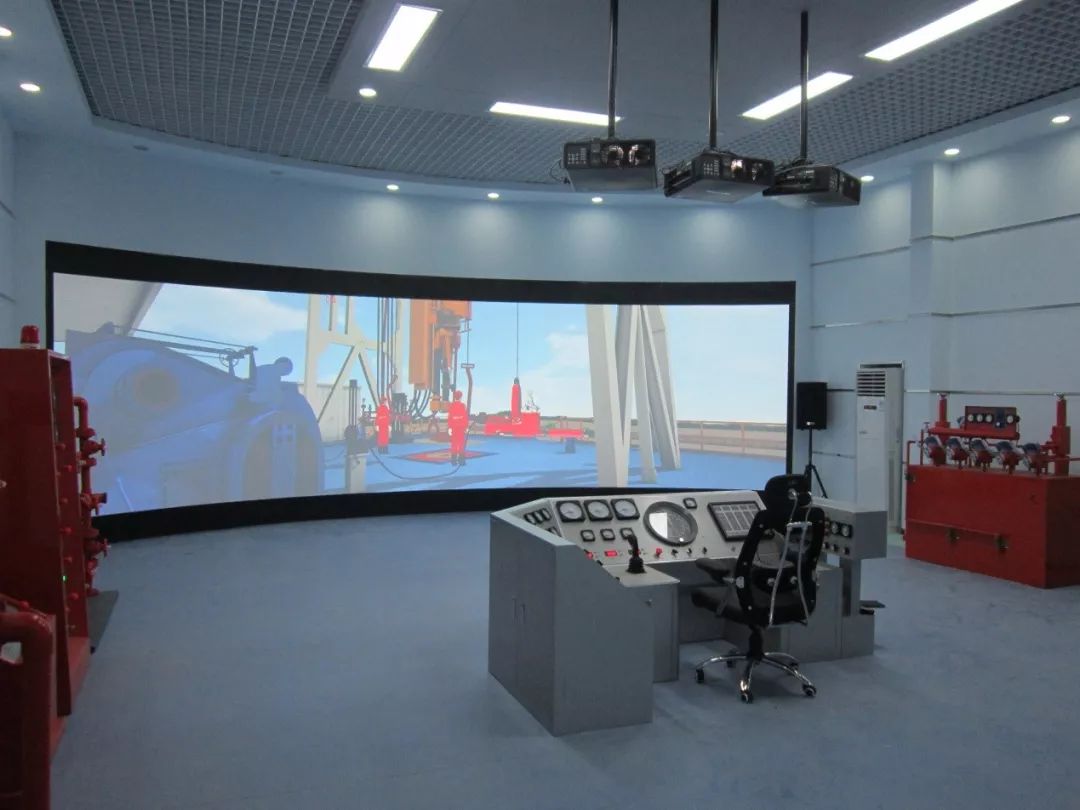Blog Information
- منشور من طرف : esimtech esimtech
- نشر على : Dec 13, 2023
- تعليقات : 1
- الآراء : 140
- الفئة : جنرال لواء
- وصف : a full size drilling simulator is often equipped with physical operation consoles like the driller console, the BOP console, the remote console, etc. Along with a highly simulated display system (normally 3D), the whole layout of the device looks exactly like the operating room.
نظرة عامة
Speaking of the Petroleum industry, what would you think of? Black oil gushing out from the ground? Or giant machines roaring offshore and in the desert? To be sure, it’s a field of both high-input and high-output, generating millions of barrels of “Liquid Gold” every day, and consuming huge resources and high-tech labor at the same time.
To extract oil and gas from the ground, well-trained operators and high-precision instruments are both vital. Demand for high-quality labor always requires labor training to be more efficient and effective, that’s where it comes to the drilling simulator.
What is a drilling simulator?
Generally, a set of devices that replicates the environment, phenomenon, operations, and feedback of the oil & gas drilling process. To achieve a certain level of fidelity, a full size drilling simulator is often equipped with physical operation consoles like the driller console, the BOP console, the remote console, etc. Along with a highly simulated display system (normally 3D), the whole layout of the device looks exactly like the operating room.

Apart from physical devices and equipment, petroleum-based drilling software is designed and embedded in the entire system to interact with the operators. They can lay their own hands on the handles and buttons to do the drilling, then get feedback from the machine to see how a natural oil well would respond to their operation. By creating “the scene”, operators in the device are enabled to experience how these expensive gases and liquids are being produced by our technicians and workers. You’d know it by now, the machine is created to train practitioners in the Petroleum industry.
The use of simulators for personnel training is not new at all in some specific industries and fields: aerospace, military, marine survey, and even car driving lessons. Now the digitization of tutorials has come to the oil & gas industry. Since its invention, thousands of drilling simulators have been deployed around the globe, providing E&P companies and drilling contractors a lot more well-trained labor than before by improving the efficiency of oil and gas work skills teaching. Petroleum engineering has also benefited from it.
Why not just train the operator on site?
The answer to this question is clear: for HSE and money-saving.
The petroleum industry requires complex and high-precision work skills, while the dangerous and harsh environment makes it hard to carry out any training activity at the construction site. To ensure the trainees’ health and safety while providing them with practical training, a simulation system becomes a good way out.
Another factor is that a part of oil and gas production accidents in recent years are caused by human factors, and the consequences of such accidents can be catastrophic. Complete HSE training is necessary before actual work.
Some might wonder why is it money-saving since you need to purchase this complex machine at a price of a nice car. While a whole set of simulation training systems can be costly, it’s only a fraction compared to the cost of oil & gas production (btw drilling is one of the most expensive parts of the entire process). That is to say, having your trainees operating on the real machine could potentially cost a lot more money (and is extremely dangerous). Plus, a drilling simulation training system also helps reduce the non-productive time to a minimum, leading to more output.
